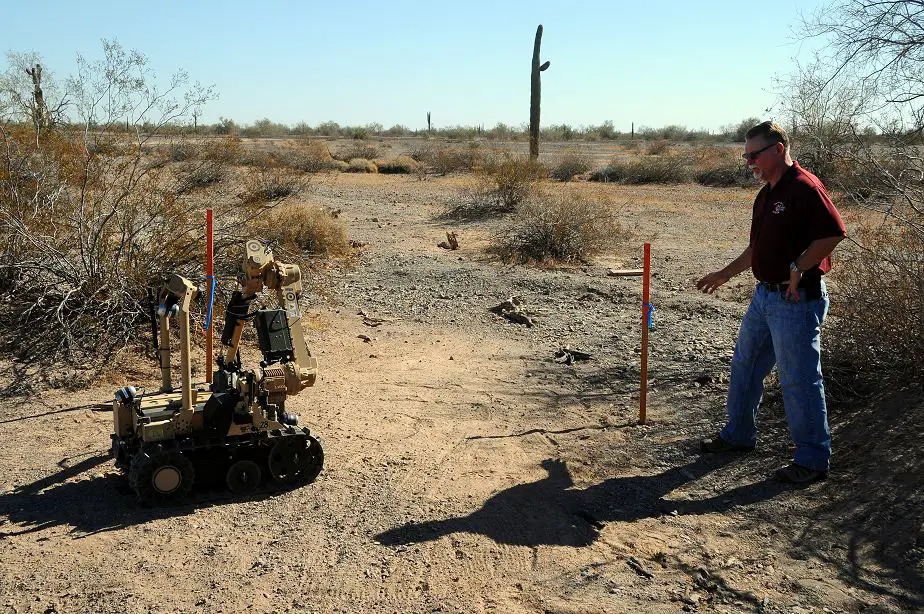U.S. Army Yuma Proving Ground (YPG) conducts rapid and thorough testing of Standoff Robotic Explosive Hazard Detection System (SREHD), an explosive detecting semi-autonomous system that not only detects things like land mines and improvised explosive devices, but also neutralizes them.
 U.S. Army Yuma Proving Ground (YPG) test officer Robert Archiable prepares for a test run of the Standoff Robotic Explosive Hazard Detection System (SREHD), an explosive detecting semi-autonomous system that not only detects things like land mines and improvised explosive devices, but also neutralizes them. (Picture U.S. Mod )
U.S. Army Yuma Proving Ground (YPG) test officer Robert Archiable prepares for a test run of the Standoff Robotic Explosive Hazard Detection System (SREHD), an explosive detecting semi-autonomous system that not only detects things like land mines and improvised explosive devices, but also neutralizes them. (Picture U.S. Mod )
Whereas previous mine-detecting robots only sported a single camera and a five-jointed mechanical arm for interrogating threats, the SREHD boasts stereoscopic cameras that provide a Soldier a three dimensional representation of the terrain being scanned on a handheld computer device and sophisticated sensors that help them discriminate between threatening devices and innocuous pieces of debris. A microphone mounted to the robot enables an operator to hear sounds in the vicinity of the system, too.
The SREHD methodically scans an area and marks a cleared trail with blue dye. If a threat is detected, the robot sprays an X on the ground to mark the spot: the Soldier operating the device can choose to retreat the vehicle and remotely detonate the discovered threat, or continue scanning before retreating and detonate multiple threats at once.
During , Soldiers from the 92nd Engineering Battalion at Fort Stewart, Ga. put the SREHD through its paces as they would in a route clearance convoy in combat areas, running the platforms across sandy trails and rugged washes and steep wahdis filled with stones and rocks, dead wood, thick brush, and other naturally-occurring debris. The recommendations of the Soldiers and test officers were rapidly incorporated into the system, which is currently undergoing additional testing in the same punishing environment.














